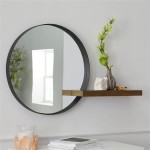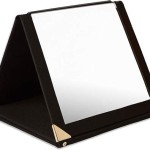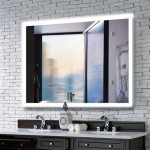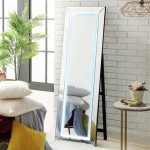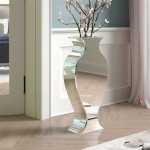Antique Glass Mirrors: A Reflection of History and Craftsmanship
Antique glass mirrors offer a glimpse into the past, showcasing evolving techniques and artistic sensibilities. More than mere reflective surfaces, these pieces serve as historical artifacts and decorative objects, adding character and depth to any space. Their unique qualities, born from specific manufacturing processes and the passage of time, distinguish them from modern counterparts.
The Evolution of Mirror Making
Early mirrors, dating back to antiquity, were made from polished obsidian, bronze, and other metals. The development of glassblowing in the 1st century CE paved the way for glass mirrors, initially backed with lead or tin. However, these early glass mirrors were small and expensive. The Venetian dominance of glassmaking during the Renaissance significantly advanced mirror production. Venetian artisans perfected the art of creating large, clear glass sheets and developed the mercury-backed mirror, renowned for its brilliance.
Identifying Antique Mirrors
Several factors contribute to the identification of antique mirrors. The type of glass itself provides clues. Early glass often exhibits imperfections like bubbles, ripples, and slight color variations due to the manufacturing processes of the time. The backing material is another key indicator. Mercury was commonly used until the mid-19th century, when silvering techniques became prevalent. Examining the frame and its construction can also offer insights into the mirror's age and origin. Hand-carved wooden frames, ornate gesso designs, and specific hardware styles can all point towards a particular period.
The Allure of Mercury Glass
The silvery sheen of mercury glass gives antique mirrors a distinct and captivating quality. This backing method involved applying a thin layer of tin and mercury to the back of the glass, resulting in a reflective surface with a subtle warmth and depth. Over time, the mercury backing can develop a characteristic foxing or spotting, a natural process of oxidation that adds to the mirror's antique charm. This aging process is often prized by collectors as evidence of authenticity and a testament to the mirror's age.
Distinguishing Antique Mirrors from Reproductions
The increasing popularity of antique mirrors has led to the production of reproductions. Distinguishing genuine antiques from replicas requires careful examination. Reproductions often lack the subtle imperfections found in antique glass, exhibiting a flawless, uniform surface. Examining the back of the mirror can also reveal clues. Modern reproductions may use silvering or other backing methods that differ from the traditional mercury backing. The frame's construction and finish can also be indicative of a reproduction. Mass-produced frames often lack the handcrafted details and patina of antique frames.
Caring for Antique Mirrors
Preserving the beauty and integrity of antique mirrors requires proper care. Avoid harsh cleaning chemicals, which can damage the delicate glass and backing. Instead, use a soft cloth and a gentle cleaning solution specifically designed for antique mirrors. Excessive moisture and humidity can also contribute to deterioration, particularly for mercury-backed mirrors. Store or display antique mirrors in a climate-controlled environment away from direct sunlight and extreme temperature fluctuations to prevent further damage.
The Value of Antique Mirrors
The value of an antique mirror depends on several factors, including its age, size, condition, rarity, and historical significance. Mirrors from prominent periods, such as the Venetian Renaissance or the Victorian era, often command higher prices. The presence of original frames, particularly those with intricate carvings or elaborate designs, can also significantly increase the value. Mirrors with notable provenance, such as those belonging to historical figures or displayed in significant locations, can hold exceptional value.
Antique Mirrors in Interior Design
Antique mirrors offer a versatile and elegant addition to various interior design styles. They can serve as focal points in living rooms, dining rooms, and bedrooms, adding a touch of history and sophistication. Their reflective surfaces can also enhance the perception of space and light, making them particularly well-suited for smaller rooms or areas with limited natural light. Antique mirrors can be incorporated into a range of design schemes, from traditional and classic to eclectic and bohemian, offering a unique decorative element that transcends fleeting trends.
Antique mirrors represent more than just reflective surfaces; they are tangible connections to the past. Their unique characteristics, borne from historical manufacturing techniques and the passage of time, offer a blend of artistry, history, and decorative appeal that continues to captivate collectors and enthusiasts alike.

Antique Mirror Glass Safety Replacements

Markle Antique Glass Panel Mirror Pottery Barn

Statement Antiqued Mirror Antique Glass Tiles Diy

Antique Mirror Glass Devlin In Design Specialist Decorators

Antique Mirror Glass

Sample Piece Antique Mirror Glass Aged Distressed Foxed Tiles

Affordable Custom Antique Mirrors In New York

Antique Mirror Color Copper Free Silver Glass Tiles China Mirrors Smoked Backsplash Wall Made In Com

Antique Mirror Glassart Design

Antique Framed Mirror Wall With Antiqued Glass



